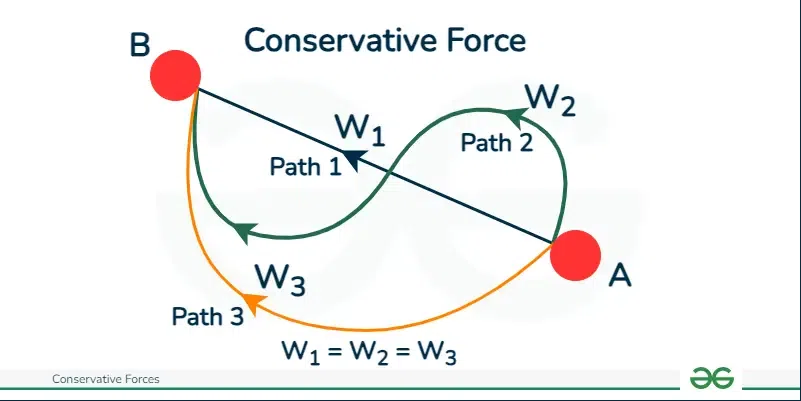Nintendo's Conservative Approach: A Winning Formula Or Missed Opportunities?

Table of Contents
The Strengths of Nintendo's Conservative Approach
Nintendo's conservative approach isn't simply about playing it safe; it's a calculated strategy built on several key pillars.
Focus on First-Party IPs
Nintendo's reliance on its own intellectual properties (IPs) is arguably its most defining characteristic. Iconic franchises like Mario, Zelda, Pokémon, and Animal Crossing are not just games; they are cultural touchstones. This focus on first-party development offers several advantages:
- Consistent Quality: Nintendo consistently delivers high-quality experiences, fostering brand loyalty and trust.
- Strong Brand Recognition: The mere mention of Mario or Zelda evokes immediate recognition and positive associations, ensuring strong sales.
- Successful First-Party Titles: Examples like The Legend of Zelda: Breath of the Wild, Super Mario Odyssey, and Pokémon Sword and Shield have broken sales records and cemented their place in gaming history. These successes contribute significantly to Nintendo's revenue streams.
- Reduced Risk: Investing in proven IPs minimizes the risk associated with developing entirely new franchises.
Family-Friendly Focus and Niche Market
Nintendo's dedication to a family-friendly audience is another cornerstone of its conservative approach. While this niche market strategy may limit overall market share compared to competitors like Sony and Microsoft, it offers distinct benefits:
- Broader Appeal: Family-friendly games attract a wider demographic, including children and families who might not engage with more mature titles.
- Positive Brand Image: A family-friendly image enhances Nintendo's reputation and allows for wider marketing reach, including avenues unavailable to competitors.
- Examples of Family-Friendly Games: Games like Super Mario Sunshine, Kirby and the Forgotten Land, and Animal Crossing: New Horizons epitomize Nintendo's commitment to all-ages entertainment.
- Limitations: The downside is a smaller potential player base compared to mature-rated games offered by competitors.
Hardware Innovation and Controlled Ecosystem
Nintendo’s history is rich with unique hardware innovations. From the revolutionary Wii Remote to the innovative Joy-Cons, Nintendo often pushes the boundaries of game controller design. Maintaining control over the entire hardware-software ecosystem grants:
- Optimized Gameplay: Nintendo can tailor its games specifically to its hardware, leading to more seamless and engaging experiences.
- Unique Selling Points: Innovative hardware gives Nintendo a distinct advantage in the marketplace, setting its consoles apart from competitors.
- Examples of Hardware Innovation: The Wii's motion controls, the DS's dual screens, and the Switch's hybrid design are prime examples of this successful approach.
- Risks of Proprietary Technology: Reliance on proprietary technology can, however, limit third-party support and potentially hinder adoption.
The Potential Downsides of Nintendo's Conservative Approach
While Nintendo's conservative approach has undeniably yielded significant successes, it's not without its potential drawbacks.
Missed Opportunities in the Mobile Market
Nintendo's relatively late and cautious entry into the mobile gaming market is a point of contention for some analysts. Compared to competitors who aggressively pursued mobile gaming early on, Nintendo's strategy appears more hesitant:
- Late Entry: Nintendo's mobile presence, while growing, arrived significantly later than that of other major players.
- Comparison with Competitors: The success of mobile games from companies like Tencent and Activision Blizzard underscores the potential revenue Nintendo might have captured earlier.
- Examples of Successful Mobile Games: Games like Candy Crush Saga and Pokémon GO (while a collaboration) demonstrate the significant revenue potential of the mobile market.
- Potential Missed Revenue: A more aggressive early expansion into mobile gaming could have generated substantial additional revenue for Nintendo.
Resistance to Technological Advancements
Nintendo has, at times, been slower to adopt new technologies and gaming trends. This conservatism, while sometimes strategic, has potential downsides:
- Slower Adoption of New Technologies: Nintendo has historically been cautious in embracing new technologies, such as online features and high-fidelity graphics.
- Drawbacks of Slow Adoption: This slower adoption can lead to a perception of being technologically behind competitors, affecting market competitiveness.
- Examples of Slower Adoption: The relatively late adoption of online multiplayer features is a clear example of this.
- Impact on Market Competitiveness: This cautious approach can result in missed opportunities for market leadership and influence.
Limited Third-Party Support
Nintendo's consoles generally receive less third-party support compared to those of Sony and Microsoft. This impacts the diversity and overall appeal of its platforms:
- Implications of Limited Third-Party Support: This limits the variety of games available on Nintendo consoles, potentially affecting the player base.
- Impact on Variety and Appeal: A smaller library of games from diverse developers can make Nintendo consoles less attractive to certain players.
- Examples of Missing Titles: Many popular titles available on PlayStation and Xbox are absent from Nintendo platforms, often due to the technical challenges of porting to unique hardware.
- Reasons for Limited Third-Party Support: Factors include the unique hardware architecture and the smaller potential player base compared to competitors.
Conclusion: Weighing the Success and Shortcomings of Nintendo's Conservative Approach
Nintendo's conservative approach has undeniably been a source of both success and potential missed opportunities. Its focus on first-party IPs, family-friendly games, and hardware innovation has yielded iconic franchises and significant market success. However, its relatively late entry into mobile gaming, slower adoption of certain technologies, and limited third-party support present potential weaknesses. Ultimately, whether Nintendo's conservative approach is a winning formula or a series of missed opportunities is a complex question with no easy answer. It's a strategy that has worked remarkably well for decades, but the ever-evolving gaming landscape demands continuous adaptation. What are your thoughts on Nintendo's conservative approach? Share your perspective in the comments below!

Featured Posts
-
 Suksesnya Program Bali Bersih Sampah Dukungan Penting Kodam Udayana
May 28, 2025
Suksesnya Program Bali Bersih Sampah Dukungan Penting Kodam Udayana
May 28, 2025 -
 Menteri Hanif Faisol Dorong Daerah Lain Tiru Sukses Pengelolaan Sampah Bali
May 28, 2025
Menteri Hanif Faisol Dorong Daerah Lain Tiru Sukses Pengelolaan Sampah Bali
May 28, 2025 -
 Goldman Sachs Ceos Campaign To Silence Internal Critics
May 28, 2025
Goldman Sachs Ceos Campaign To Silence Internal Critics
May 28, 2025 -
 Irjen Daniel Pimpin Sertijab 7 Perwira Menengah Polda Bali Inilah Pesan Yang Disampaikan
May 28, 2025
Irjen Daniel Pimpin Sertijab 7 Perwira Menengah Polda Bali Inilah Pesan Yang Disampaikan
May 28, 2025 -
 Amas 2025 Jennifer Lopez As Host Official Announcement
May 28, 2025
Amas 2025 Jennifer Lopez As Host Official Announcement
May 28, 2025
